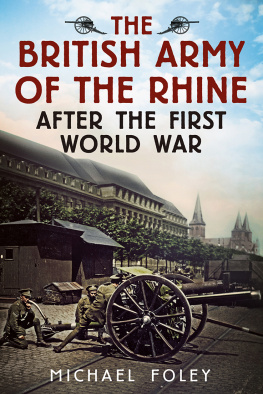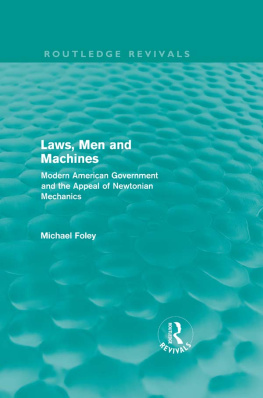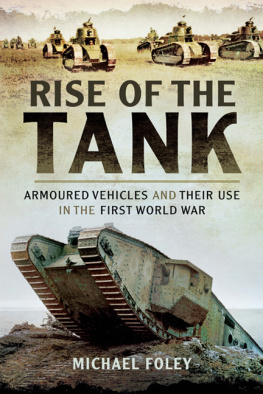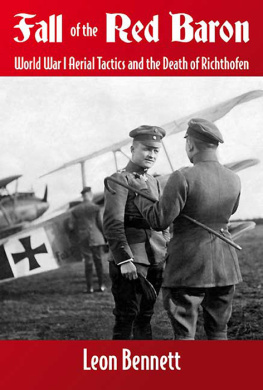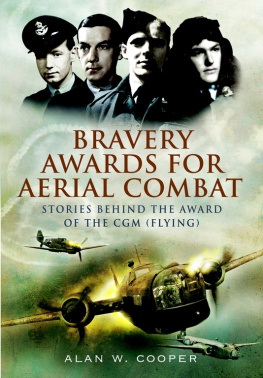Michael Foley - Pioneers of Aerial Combat: Air battles of the First World War
Here you can read online Michael Foley - Pioneers of Aerial Combat: Air battles of the First World War full text of the book (entire story) in english for free. Download pdf and epub, get meaning, cover and reviews about this ebook. year: 2013, publisher: Pen & Sword Books, genre: History. Description of the work, (preface) as well as reviews are available. Best literature library LitArk.com created for fans of good reading and offers a wide selection of genres:
Romance novel
Science fiction
Adventure
Detective
Science
History
Home and family
Prose
Art
Politics
Computer
Non-fiction
Religion
Business
Children
Humor
Choose a favorite category and find really read worthwhile books. Enjoy immersion in the world of imagination, feel the emotions of the characters or learn something new for yourself, make an fascinating discovery.
- Book:Pioneers of Aerial Combat: Air battles of the First World War
- Author:
- Publisher:Pen & Sword Books
- Genre:
- Year:2013
- Rating:4 / 5
- Favourites:Add to favourites
- Your mark:
- 80
- 1
- 2
- 3
- 4
- 5
Pioneers of Aerial Combat: Air battles of the First World War: summary, description and annotation
We offer to read an annotation, description, summary or preface (depends on what the author of the book "Pioneers of Aerial Combat: Air battles of the First World War" wrote himself). If you haven't found the necessary information about the book — write in the comments, we will try to find it.
Pioneers of Aerial Combat: Air battles of the First World War — read online for free the complete book (whole text) full work
Below is the text of the book, divided by pages. System saving the place of the last page read, allows you to conveniently read the book "Pioneers of Aerial Combat: Air battles of the First World War" online for free, without having to search again every time where you left off. Put a bookmark, and you can go to the page where you finished reading at any time.
Font size:
Interval:
Bookmark:
To Lewis.
I didnt know you could miss someone so much.
Other books by Michael Foley
Front-Line Essex Sutton, 2005
Front-Line Kent Sutton, 2006
Essex, Ready For Anything Sutton, 2006
Hard As Nails Spellmount, 2007
Front-Line Suffolk Sutton, 2007
Front-Line Thames History Press, 2008
More Front-Line Essex History Press, 2008
Essex in the First World War History Press, 2009
Prisoners of the British Bank House Books, 2009
Essex at War Through Time Amberley, 2009
London Under Attack History Press, 2010
London Through Time Amberley, 2010
Havering Through Time Amberley, 2010
Barking and Dagenham Through Time Amberley, 2010
Londons East End Through Time Amberley, 2011
Disasters on the Thames History Press, 2011
Essex Through Time Amberley, 2012
Essex at War in Old Photographs Amberley, 2012
First published in Great Britain in 2013 by
Pen & Sword Military
an imprint of
Pen & Sword Books Ltd
47 Church Street
Barnsley
South Yorkshire
S70 2AS
Copyright Michael Foley 2013
ISBN 978 1 78159 272 4
PDF ISBN: 978 1 47382 938 1
EPUB ISBN: 978 1 47382 852 0
PRC ISBN: 978 1 47382 895 7
The right of Michael Foley to be identified as the Author of this
Work has been asserted by him in accordance with the Copyright,
Designs and Patents Act 1988.
A CIP catalogue record for this book is available from the British
Library
All rights reserved. No part of this book may be reproduced or
transmitted in any form or by any means, electronic or mechanical
including photocopying, recording or by any information storage
and retrieval system, without permission from the Publisher in
writing.
Typeset in Ehrhardt by
Mac Style, Bridlington, East Yorkshire
Printed and bound in the UK by CPI Group (UK) Ltd, Croydon,
CRO 4YY
Pen & Sword Books Ltd incorporates the imprints of Pen & Sword
Archaeology, Atlas, Aviation, Battleground, Discovery, Family
History, History, Maritime, Military, Naval, Politics, Railways,
Select, Social History, Transport, True Crime, and Claymore Press,
Frontline Books, Leo Cooper, Praetorian Press, Remember When,
Seaforth Publishing and Wharncliffe.
For a complete list of Pen & Sword titles please contact
PEN & SWORD BOOKS LIMITED
47 Church Street, Barnsley, South Yorkshire, S70 2AS, England
E-mail:
Website: www.pen-and-sword.co.uk
Contents
Acknowledgement
Thank you to Linne Matthews for all her hard work in editing this book. And thanks also to James Payne of Through their Eyes (www.throughtheireyes2.co.uk) for the use of his photographs.
Note on illustrations
The pictures in this book are from the authors own collection of postcards, magazines and old photograph albums and it has been impossible to determine if any copyright is attached to them. Any infringement of copyright as a result of their publication is entirely unintentional; if any copyright has been infringed, the author extends his apologies to the parties concerned.
Introduction
T he world of the early aircraft has always been something that has fascinated me, which is one of the reasons I have come to write this book. The courage of those early pioneers of flight was incredible; they risked their lives in what were often machines held together by bits of string and wood. When they took off they didnt know if their aircraft would hold together until they landed or whether the engine would continue to run once they were off the ground.
I find it amazing how flight evolved so quickly from those early flimsy machines into the faster, more reliable aircraft that within little more than a decade of the first flights were performing incredible acts of flying in the conflict of the First World War. It is, of course, an accepted fact that the rapid progression in the art of flying was mainly due to the outbreak of the war. Governments would not have been willing to spend so much money on the development and production of aircraft in peacetime. This was especially true of the British Government, who in the early years of flight lagged behind other powers in the use of flying machines and was totally unprepared for the war when it began. Private producers of aircraft would also not have put as much effort into developing new aircraft if they did not have such a ready market for their wares.
According to an early copy of The War Illustrated magazine, the French did more to improve their military aviation in the first two weeks of the war than they had done in the previous two years of peace, and this was despite France being one of the leading countries in the development of early flight.
There has obviously been much written about early flight since the First World War. Much of the research for this book has come from what was written at the time by those involved, including features in newspapers and periodicals. Of course, this has to be taken in the light of how much of what was reported was propaganda. I have, however, tried to present a balanced view of events.
One of the most surprising aspects of the organization of flight during the war was the dispute over who should have been in charge of organizing the supply of aircraft. The early years of the war were marked by fierce competition between the Royal Flying Corps (RFC) and the Royal Naval Air Service (RNAS) as both arms of the flying service tried to outdo each other in obtaining the best aircraft in the greatest numbers.
When the government did try and do something about the situation it seems that the men and groups given the task were unable to force both sides into an agreement often due to the fact that they had no power to do so. Throughout the war there were a number of committees formed by the government to do just this but none were given sufficient powers to carry out the task. There also seemed to be little government stomach for a fight with the Admiralty, who appeared to be intent on obtaining for themselves the best aviation materials available, even if this was at the expense of the war effort as a whole.
The disputes also carried on in later years between the Air Board and the Ministry of Munitions over who was the most qualified to take control of aircraft production. There are a number of reports available in The National Archives from both of these organizations that seem to show them trying to outdo each other and argue their own case perhaps often at the expense of what was the best action for the war effort.

An obviously very popular aviation meet, going by the size of the crowd. Unfortunately, there is no location of the picture given on this postcard.
I have concentrated on events that took place in England and on the Western Front in relation to aviation during the war. There were, of course, other theatres of war where flying took place during the conflict and no doubt much of what I have written would also apply to the situation in these places, but perhaps that is something for another time.
Michael Foley
Romford, 2013
Chapter 1
Early Years of Flight
T he beginning of the twentieth century was a significant time in the development of manned flight. There had been numerous attempts at flight in the early years of the century, mostly unsuccessful and many fatal for those who attempted it. The greatest level of success seemed to be with gliders. This was no doubt due to the lack of reliable engines.
In the early twentieth century, Gustave Whitehead, a German living in America, claimed that he and a passenger had made a half-mile powered flight. Another German, Karl Jatho, had a motor glider that supposedly hopped for about 60 metres at a height of 3 metres. This was months before the Wright brothers first flight. However, what is now recognized as the first powered flight took place on 17 December 1903, when the Wright brothers made a number of powered flights, the longest being of fifty-seven seconds. Where the Wright brothers succeeded over the other early claimants was that they had recognized proof of their success.
Next pageFont size:
Interval:
Bookmark:
Similar books «Pioneers of Aerial Combat: Air battles of the First World War»
Look at similar books to Pioneers of Aerial Combat: Air battles of the First World War. We have selected literature similar in name and meaning in the hope of providing readers with more options to find new, interesting, not yet read works.
Discussion, reviews of the book Pioneers of Aerial Combat: Air battles of the First World War and just readers' own opinions. Leave your comments, write what you think about the work, its meaning or the main characters. Specify what exactly you liked and what you didn't like, and why you think so.




